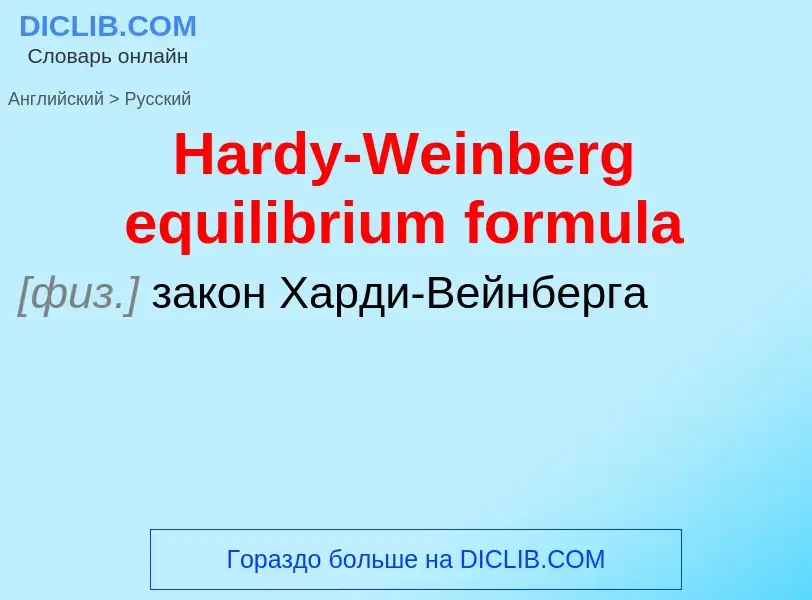Tradução e análise de palavras por inteligência artificial ChatGPT
Nesta página você pode obter uma análise detalhada de uma palavra ou frase, produzida usando a melhor tecnologia de inteligência artificial até o momento:
- como a palavra é usada
- frequência de uso
- é usado com mais frequência na fala oral ou escrita
- opções de tradução de palavras
- exemplos de uso (várias frases com tradução)
- etimologia
Hardy-Weinberg equilibrium formula - tradução para russo
общая лексика
уравнение Харди - Вайнберга
биохимия
правило Гарди
Definição
---
Мечислав Самуилович (1919-1996) , российский композитор, народный артист России (1980). Один из ведущих симфонистов - 20 симфоний, в т. ч. "Цветы Польши" (1965), Камерная симфония (1986), опера "Мадонна и солдат" (1970), балет "Золотой ключик" (1962), 16 струнных квартетов и др. Государственная премия СССР (1990).
---
(Уэйнберг) (Weinberg) Стивен (р. 1933), американский физик. Труды по физике элементарных частиц. Нобелевская премия (1979, совместно с Ш. Глэшоу и А. Саламом) за создание объединенной теории электромагнитного и слабого взаимодействий.
Wikipédia
In population genetics, the Hardy–Weinberg principle, also known as the Hardy–Weinberg equilibrium, model, theorem, or law, states that allele and genotype frequencies in a population will remain constant from generation to generation in the absence of other evolutionary influences. These influences include genetic drift, mate choice, assortative mating, natural selection, sexual selection, mutation, gene flow, meiotic drive, genetic hitchhiking, population bottleneck, founder effect, inbreeding and outbreeding depression.
In the simplest case of a single locus with two alleles denoted A and a with frequencies f(A) = p and f(a) = q, respectively, the expected genotype frequencies under random mating are f(AA) = p2 for the AA homozygotes, f(aa) = q2 for the aa homozygotes, and f(Aa) = 2pq for the heterozygotes. In the absence of selection, mutation, genetic drift, or other forces, allele frequencies p and q are constant between generations, so equilibrium is reached.
The principle is named after G. H. Hardy and Wilhelm Weinberg, who first demonstrated it mathematically. Hardy's paper was focused on debunking the view that a dominant allele would automatically tend to increase in frequency (a view possibly based on a misinterpreted question at a lecture). Today, tests for Hardy–Weinberg genotype frequencies are used primarily to test for population stratification and other forms of non-random mating.

![A [[de Finetti diagram]] representing a distribution of genotype frequencies A [[de Finetti diagram]] representing a distribution of genotype frequencies](https://commons.wikimedia.org/wiki/Special:FilePath/De finetti diagram.png?width=200)
